Caneadea Formation (Chadwick, 1933):
Type Locality: Caneadea Creek, Caneadea Gorge, NY; Members: East Sixtown Member – 0.6 km. west of Rt. 19 and Cold Creek, Gorge Dolomitic Member – Caneadea Creek by bridge at Mill Rd., Higgins Member – at Higgins NY, West Lake Member – west shore of Rushford Lake, along Hillcrest Rd.
Equivalent Names: to the west -- Gowanda Fm., Laona Fm., and Westfield Fm.; to the east -- Canisteo Formation; to the southwest -- Upper Member Perrysburg Formation.
Thickness: Total: 114.8 m (~376.5 ft); East Sixtown Member – 21.2 m (~69.5 ft); Gorge Dolomitic Member – 39.7 m (~130.2 ft); Higgins Member – 31.2 m (~102.3 ft); West Lake Member –22.7 m (~74.5 ft)
Lithology: The Caneadea Formation is characterized by interbedded gray shales, siltstones and thin sandstones. The interbedded shales and siltstones typically display alternating light and dark gray, thinly laminated beds. Sandstone beds are fine-grained, micaceous, light gray in color, and are commonly 2 - 8 cm thick. The thin sandstone beds contain paleoflow features such as furrows, striations, grooves, flute casts, and asymmetrical ripples that are usually 3D ripples, commonly linguoid ripples or HCS.
Starting from the basal contact order of Members is as follows: East Sixtown Member, Gorge Dolomitic Member, the Higgins Member and the West Lake Member. Sandstones found in the basal member, the East Sixtown Member, display thin mud drapes and have flaser bedding to lenticular bedding. Sporadic, thicker sandstones in the East Sixtown Member (~25 cm) contain festoon ripples and/or large (~ 40-50 cm wavelength) straight-crested 2D ripples.
The Gorge Dolomitic Member consists of calcareous to dolomitic sandstones that are amalgamated in packets up to 1 meter in thickness. The interbedded shales and siltstones of the Gorge Dolomitic Member consist of thin alternating laminae of dark and light gray shales, the siltstones weather a distinct red-salmon color. Within the sandstone and calcareous- dolomitic sandstone packets, HCS are common; small tempestite coquinites of brachiopod shells occur in small lenses; thin, red weathering siltstones and fine-grained sandstones occur within the interbeds, symmetrical ripples are found. Ripples are primarily small 3D ripples (HCS and linguoid ripples) with sporadic straight-crested and symmetrical ripples. The Gorge Dolomitic Member also marks the lowest appearance in the section of micaceous sandstones in which the bedding surfaces are typically coated with muscovite. These micaeous sandstones become more prevalent upsection.
In the Higgins Member, the sandstone beds can be as thick as 60 cm and form a thick packet comprised mostly of sandstones with thin interbeds of silty shale. The Higgins Member contains furrow (guttercasts) dominated beds. To the west we have correlated the Higgins Member with the Laona Sandstone.
The West Lake Member is predominantly interbedded shales and siltstones with thin sandstones occurring more common toward the top. The upper contact with the Rushford Formation is sharp identified by the first appearance of thick (>1 m) well-cemented sandstone beds.
Ichnology: In the East Sixtown Member, Cruziana ichnofacies occur within the interbedded shales, siltstones and thin sandstones. The Cruziana ichnofacies is dominated by Planolites, Palaeophycus burrows; Chondrites and Teichichnus are not as common, and Zoophycos occurs sporadically. Toward the top of the member are sporadic occurrences of Skolithos and Arenicolites. In the Gorge Dolomitic Member the Cruziana ichnofacies is replaced by the Arenicolites and Zoophycos assemblage. The Zoophycos trace fossil is commonly interpreted to represent an oxygen-poor, generally deep-water environment. However, for Devonian times, Zoophycos is also found in shallow water, near-shore deposits. This association also contains abundant Planolites, Chondrites, Palaeophycus and Schaubcylindrichnus. This assemblage may represent a variant of the Cruziana ichnofacies with the Zoophycos and Chondrites indicating a restricted oxygen environment and the Arenicolites occurring as opportunistic colonizers after storm deposition. The other possibility is that this assemblage represents a Skolithos ichnofacies with the Zoophycos occurring as a nearshore trace fossil. Furthermore, the presence of Schaubcylindrichnus in the trace fossil assemblage implies a nearshore depositional environment. In the Higgins Member, the Cruziana ichnofacies is mixed with a Skolithos ichnofacies. The West Lake Member contains a Cruziana ichnofacies.
Depositional Environment: The entire Caneadea Formation is interpreted to represent upper offshore to lower shoreface deposits. In the East Sixtown Member, turbidite deposition followed by storm reworking may account for the sandstone packets. The sandstones are sharp-based, contain flute casts, rip-up clasts and load casts, but some sandstone beds have been reworked slightly by storms as evidenced by sporadic HCS. Flaser bedding within some of the fine-grained sandstones suggests a possible tidal component as well. The depositional environment for the Gorge Dolomitic Member is above maximum storm-wave base, based on Cruziana ichnofacies and abundant HCS in the sandstones. The Cruziana ichnofacies is replaced by the Arenicolites and Zoophycos assemblage. The trace fossil suite and the deposition of carbonates suggest restricted circulation and oxygen that could indicate a deep-water depositional environment, however, the HCS, tempestites and symmetrical ripples strongly indicate that the depositional environment must have been above storm-wave base. These dolomitic packets are interpreted by us to represent a periods of shallowing in the Caneadea Formation; the depositional environment fluctuating near fair weather wave base possibly a lagoon/bay facies. The Higgins Member reflects a high depositional energy; abundant rip-up clasts, loaded beds, and swaly cross-bedded is interpreted to be a storm dominated, nearshore environment. The West Lake Member is predominantly interbedded shales and siltstones that show signs of increasing paleocurrent energy toward the top of the section. Based on occurrence of solemarks (primarily furrows (guttercasts), grooves and striations) and 3D ripples and HCS in the thin (~2-10 cm) sandstone beds, suggest a storm dominated, offshore environment.
Caneadea Formation
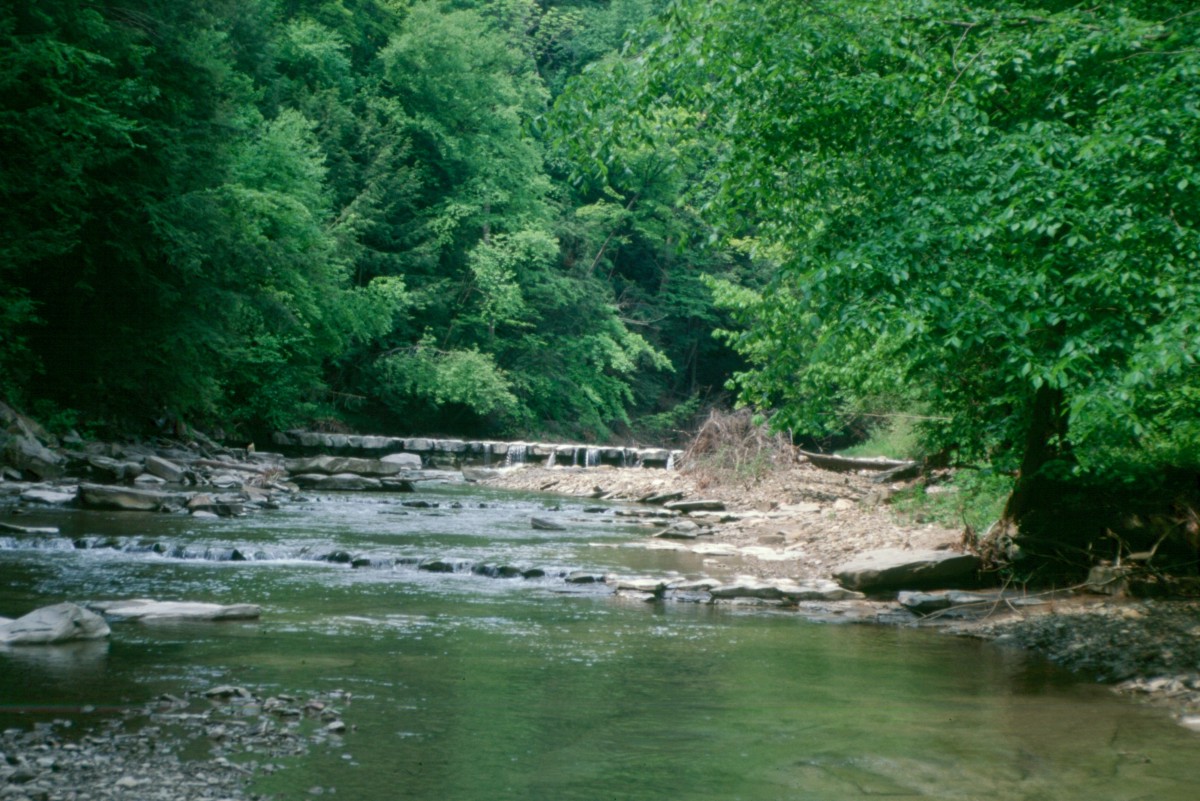
Exposure of the East Sixtown Member of the Caneadea Fm. at Sixtown Creek, the sandstone forming
the top of small cascade is seen in closer detail in the next two photographs.

Basal sandstones of the Caneadea Fm. at Sixtown Creek. The contact between the Hume Fm.
and the Caneadea Fm. is gradational; the thick, festoon rippled sandstones near the base of the
Caneadea Formation make an excellent field marker.

Close-up of sandstone marker bed in above photo, displaying festoon ripples.

Type section of the Caneadea Fm. as defined by Chadwick (1933) at Caneadea Gorge. R. Bechtel for scale (arrow).
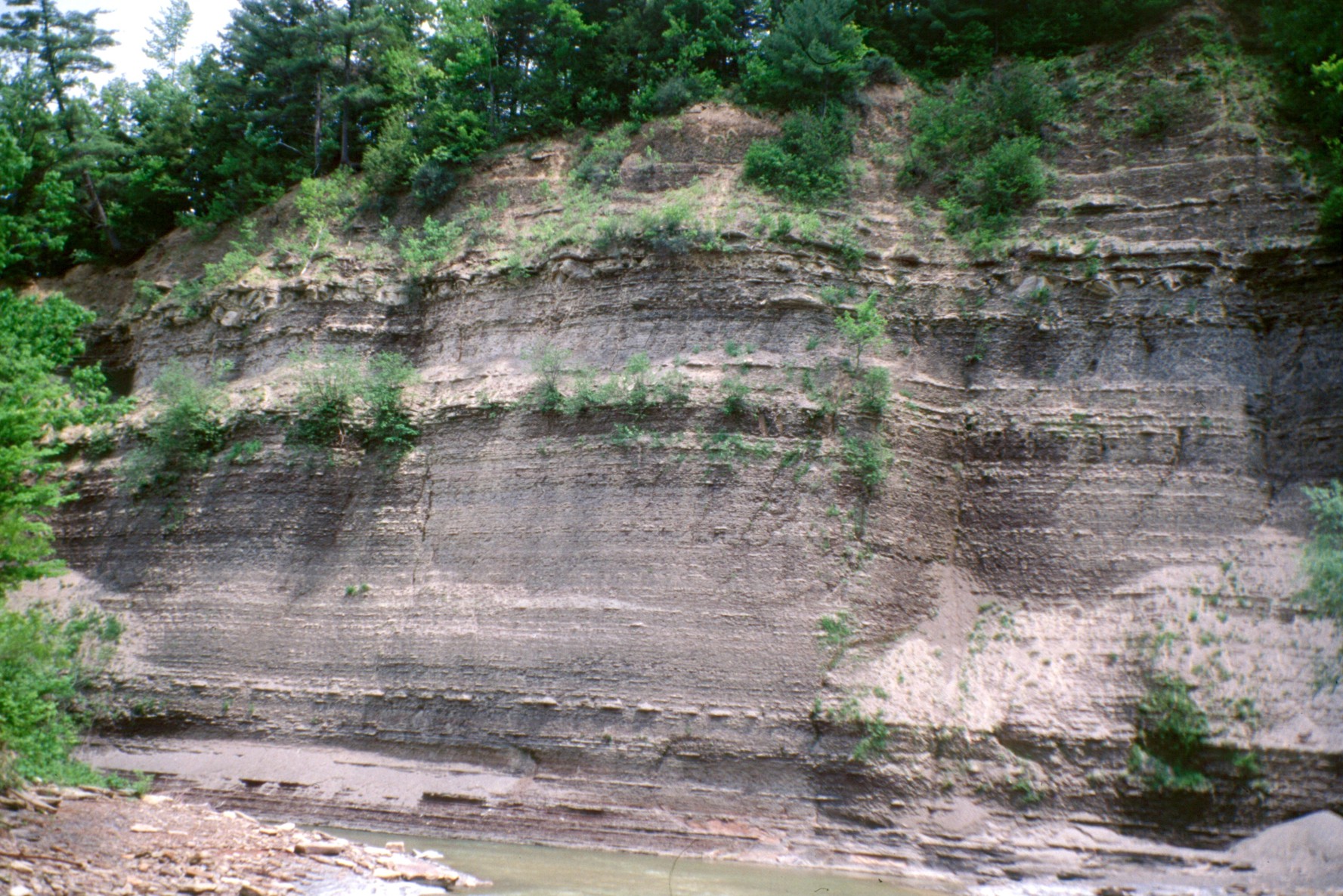
Cliff exposure of the Gorge Dolomitic Member and the Higgins Member at Caneadea Gorge.
The top of the Higgins Member contains a thick deformed section of ball-and- pillow structures
that are also observed along Rushford Lake and Sixtown Creek.
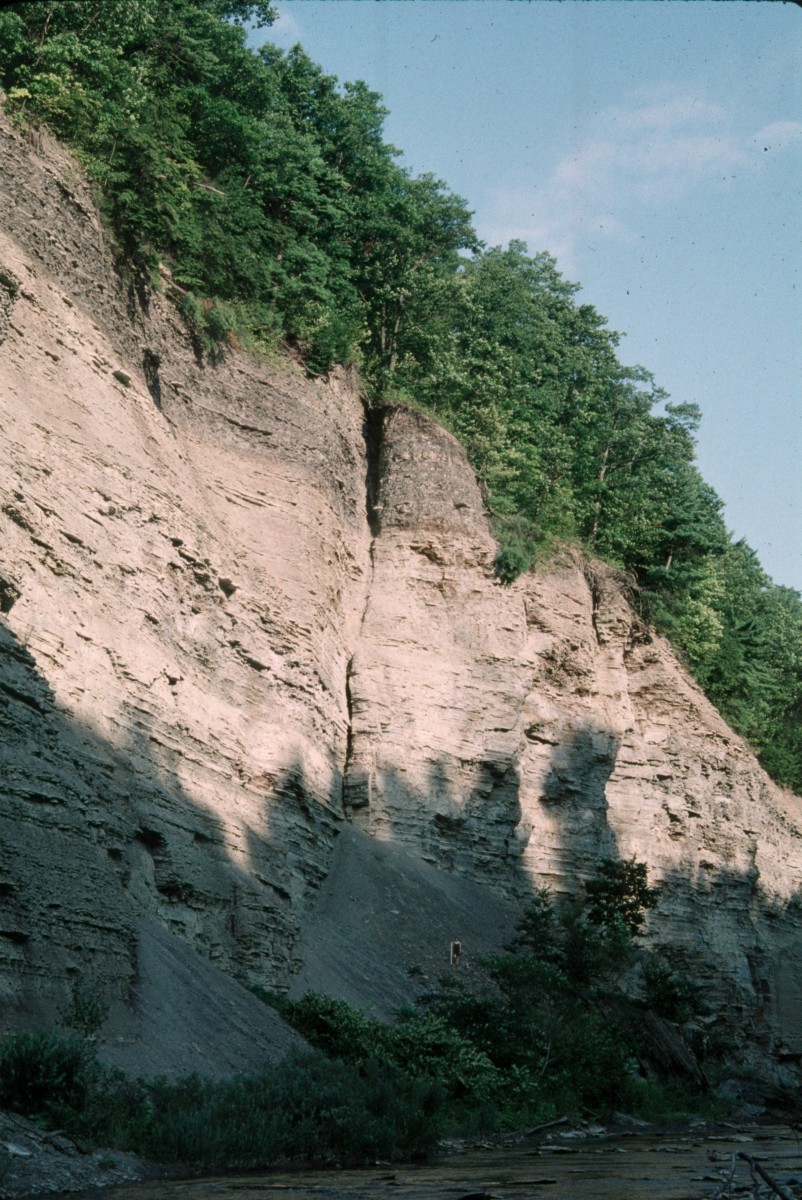
Cliff of Zoar Valley comprised of the Gowanda Fm., the western correlative of the Caneadea Fm.
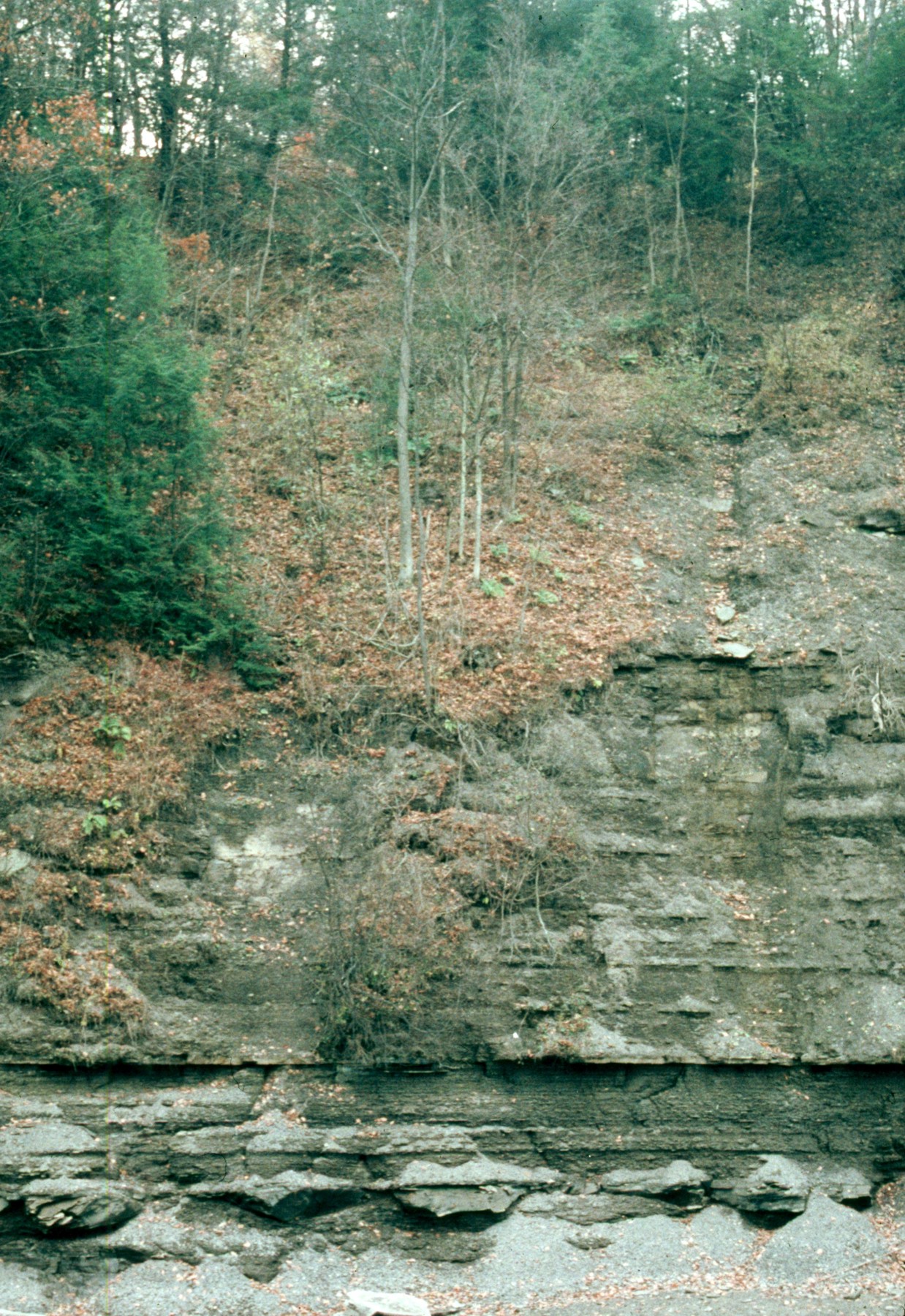
Exposure of the West Lake Member of the Caneadea Fm., along the western shore of Rushford Lake.
Note the layer of ball-and-pillow structure that occurs near the waterline, indicating past seismic activity
in the Late Devonian and marking the top of the Higgins Member.
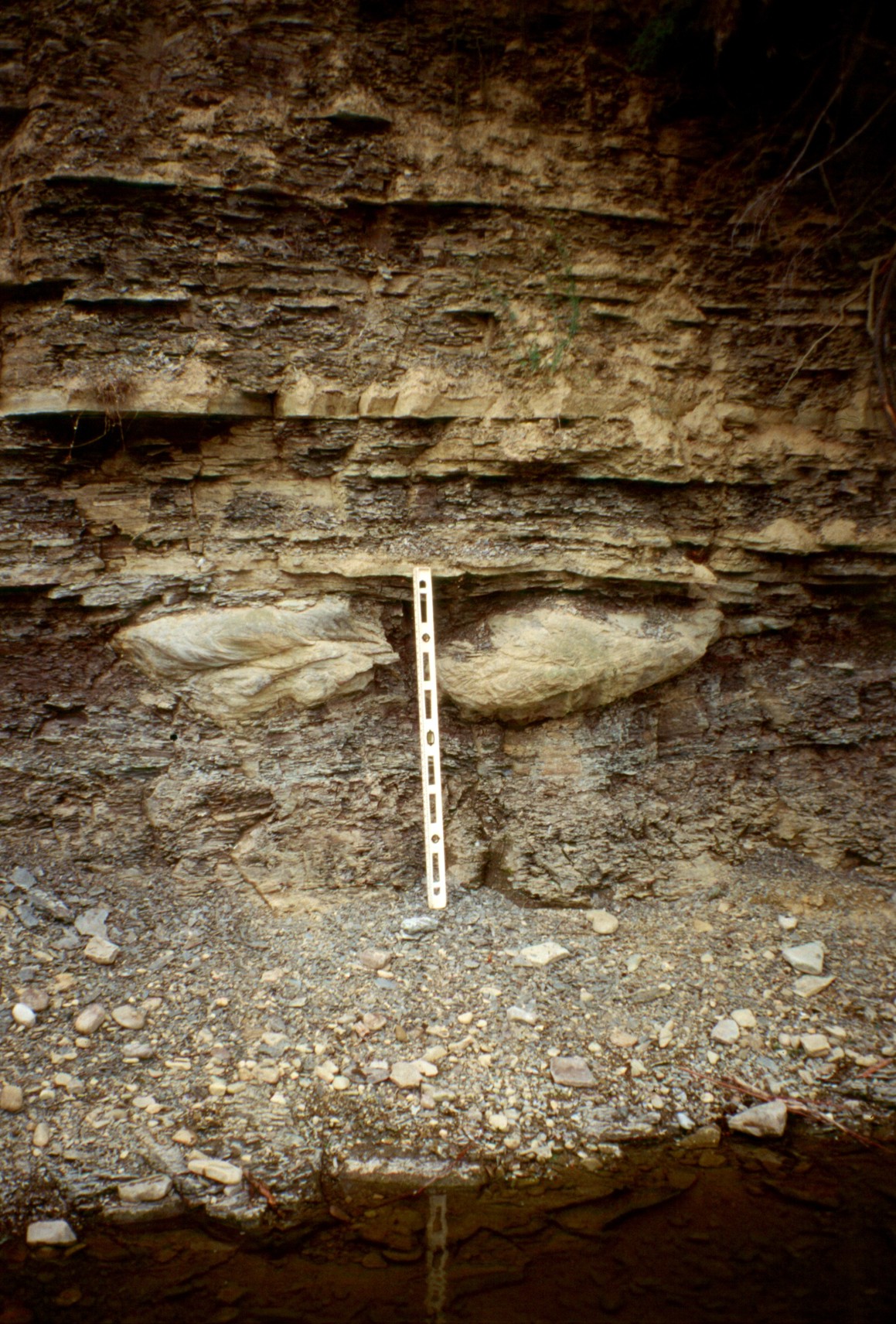
Ball-and-pillow structures along Sixtown Creek in the Higgins Member similar to the large
ball-and-pillow structures along Rushford Lake document periods of seismic activity.
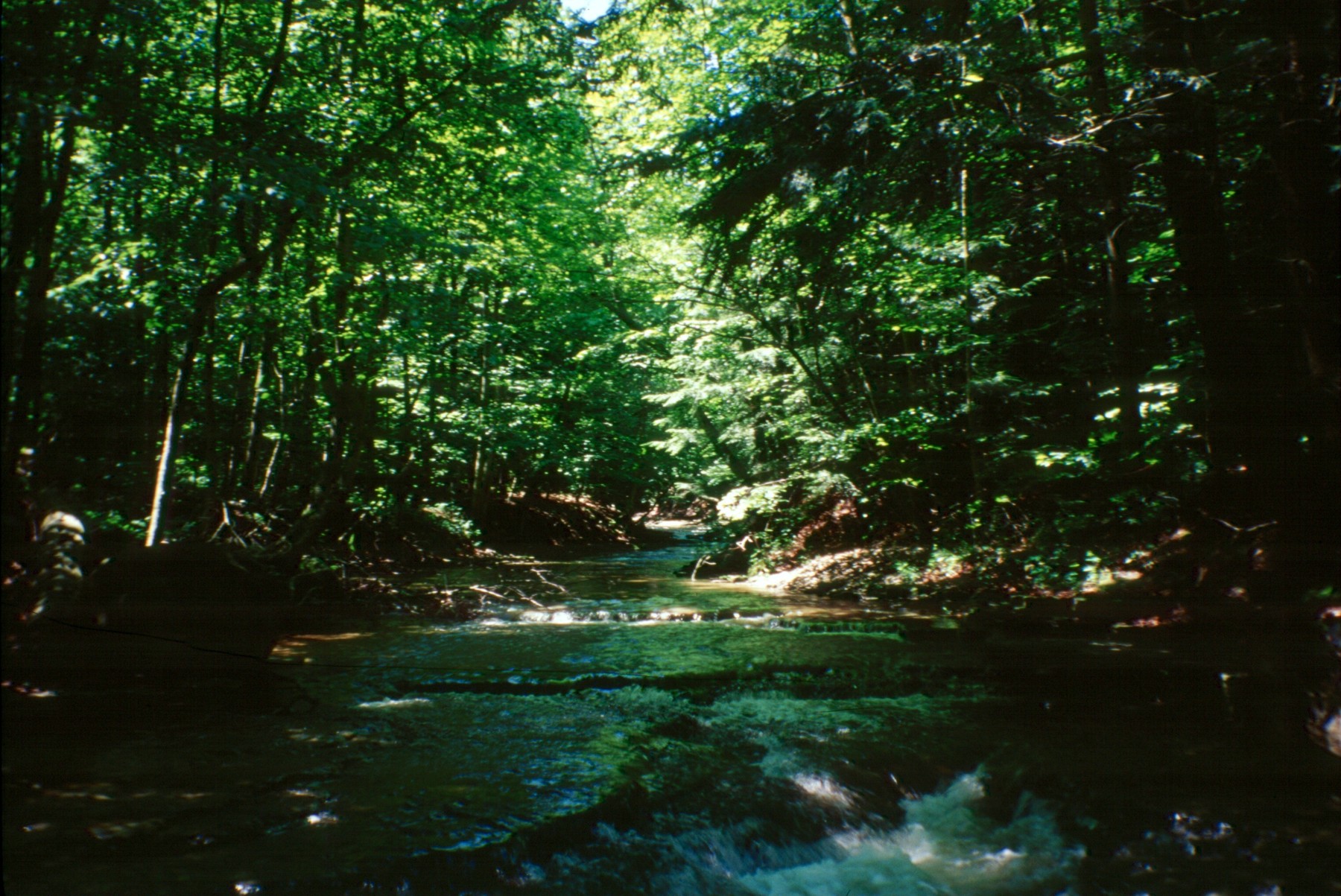
Typical creek exposure of the Caneadea Fm. at Stony Creek in the West Valley quadrangle.
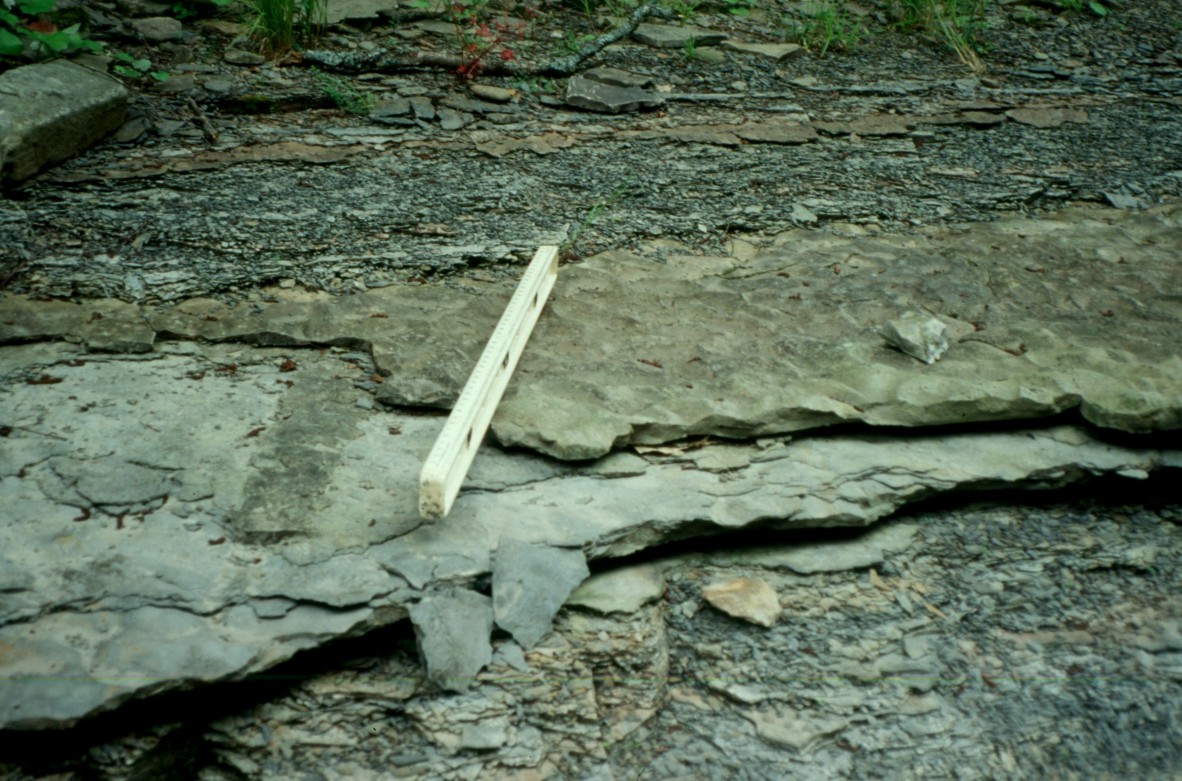
Storm deposits are commonly found within the Caneadea Fm., seen above
a large furrow (or guttercast) occurs at the base of a tempestite.
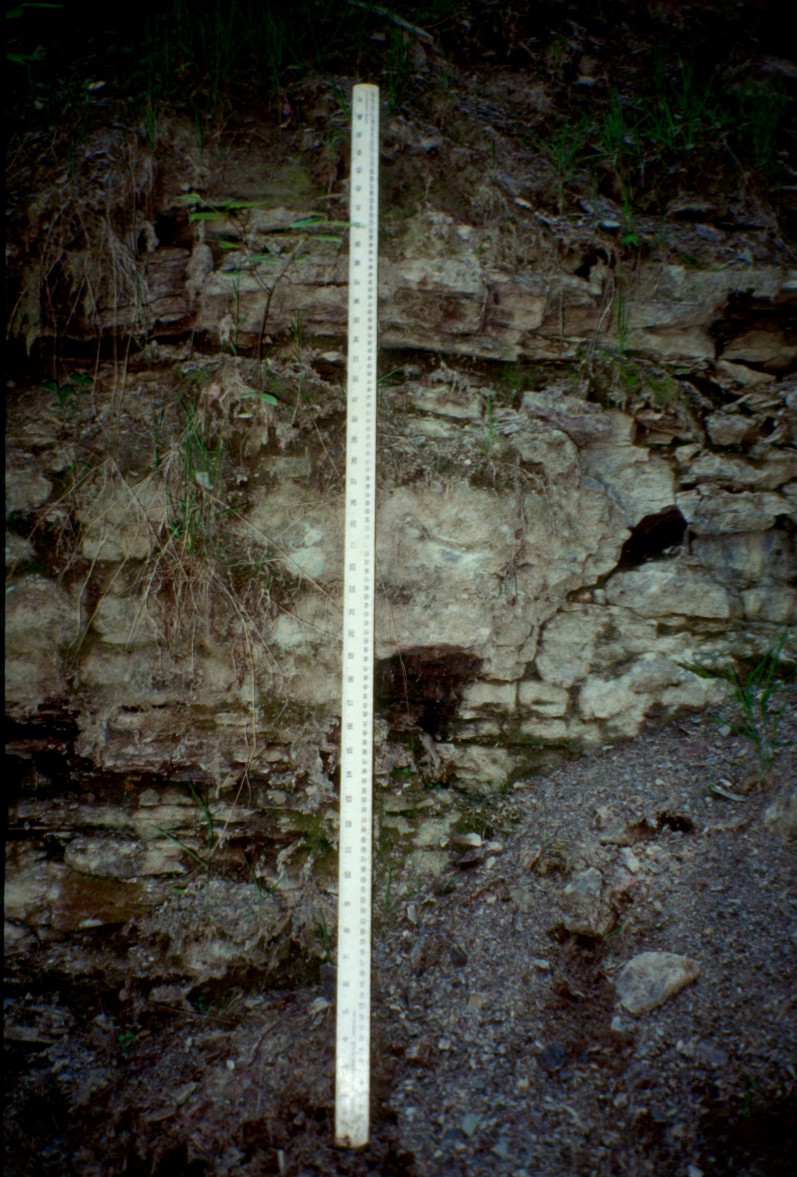
Exposure of the Gorge Dolomitic Member of the Caneadea Fm. at Caneadea Creek.
The thick, amalgamated sandstone bed is cemented by dolomite giving
the sandstones a distinctive color and weathering pattern
from other sandstones occurring in the Caneadea Fm.